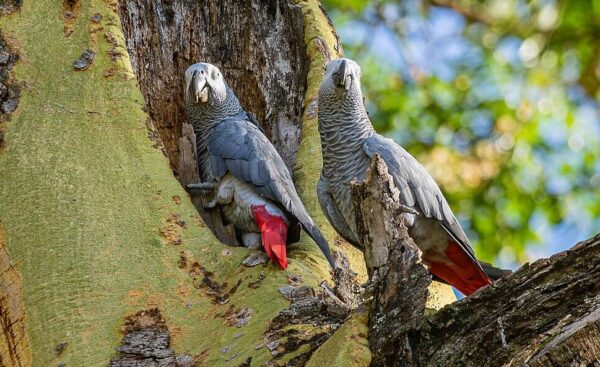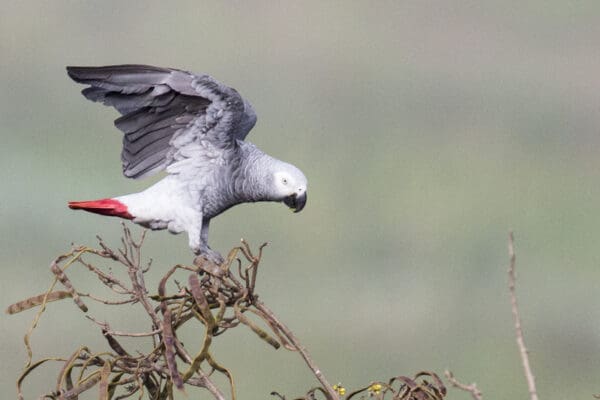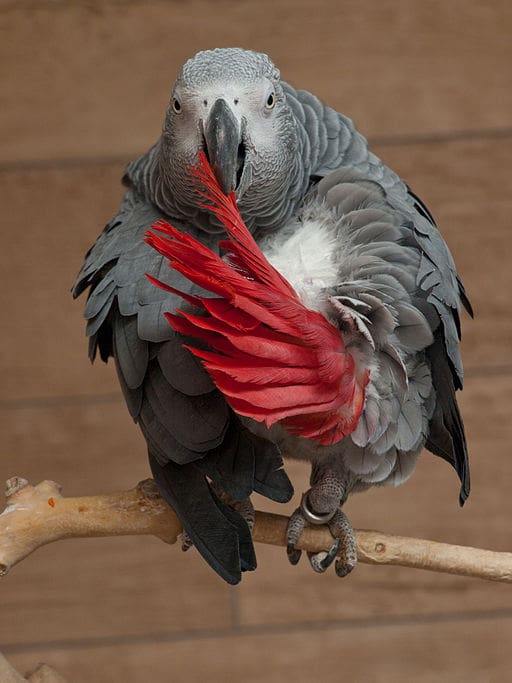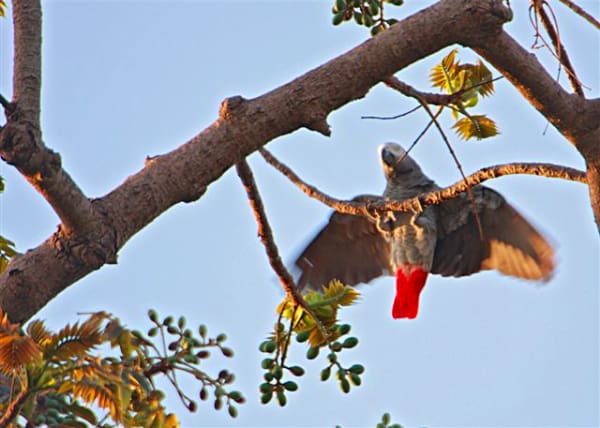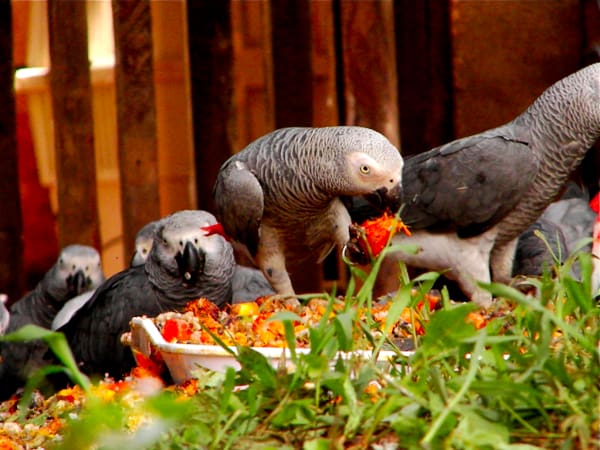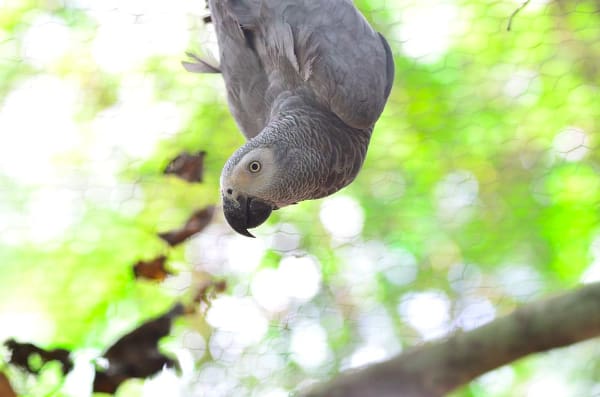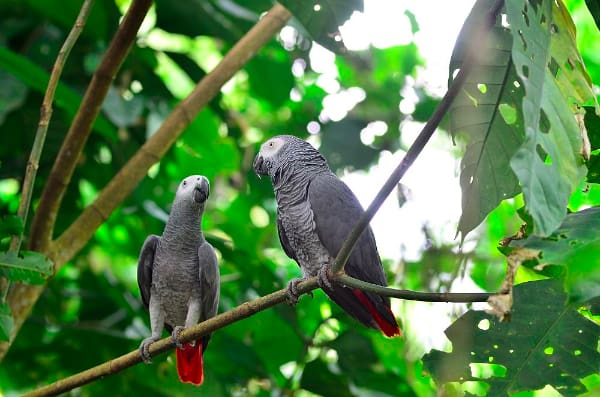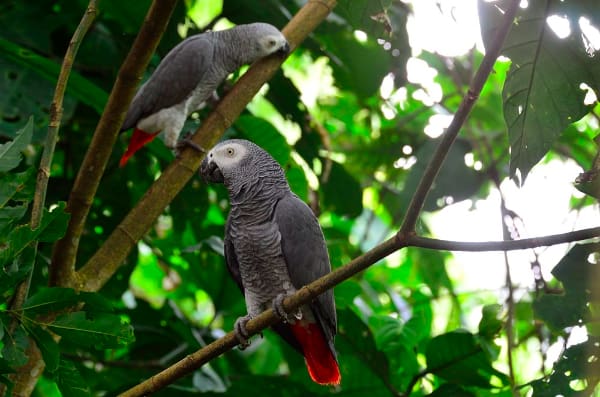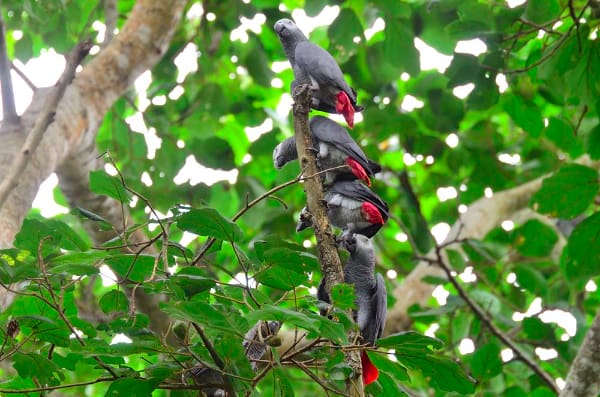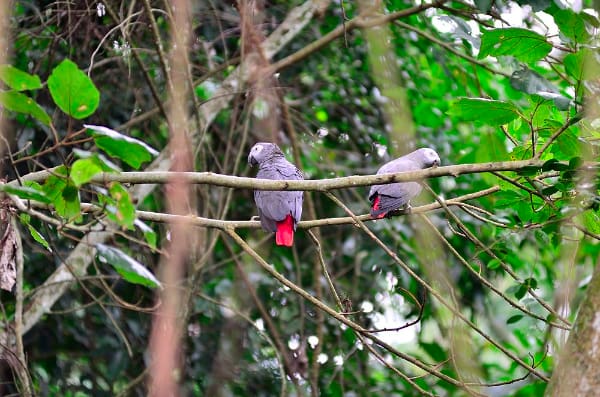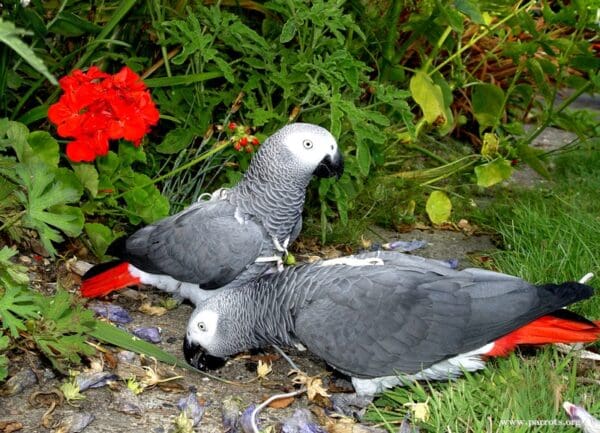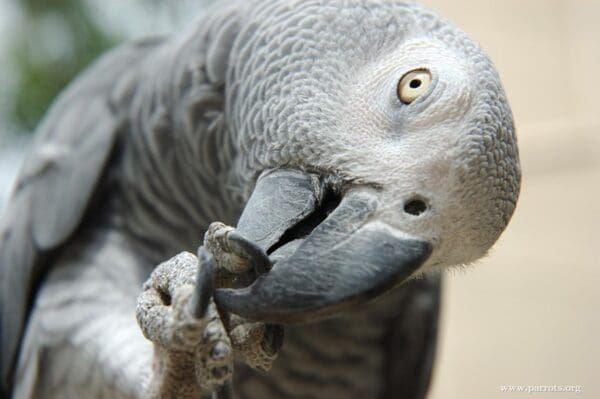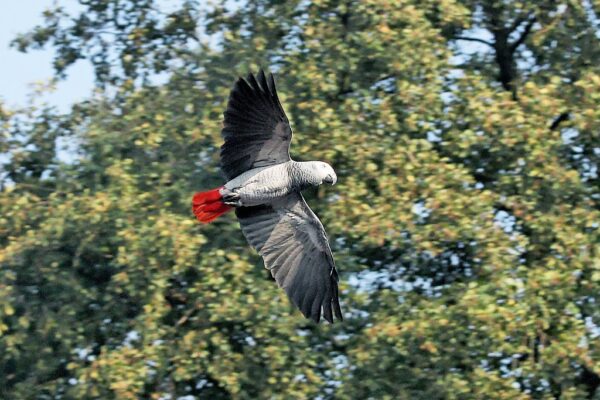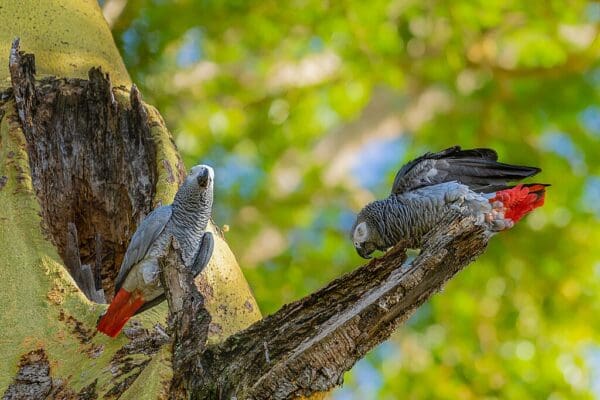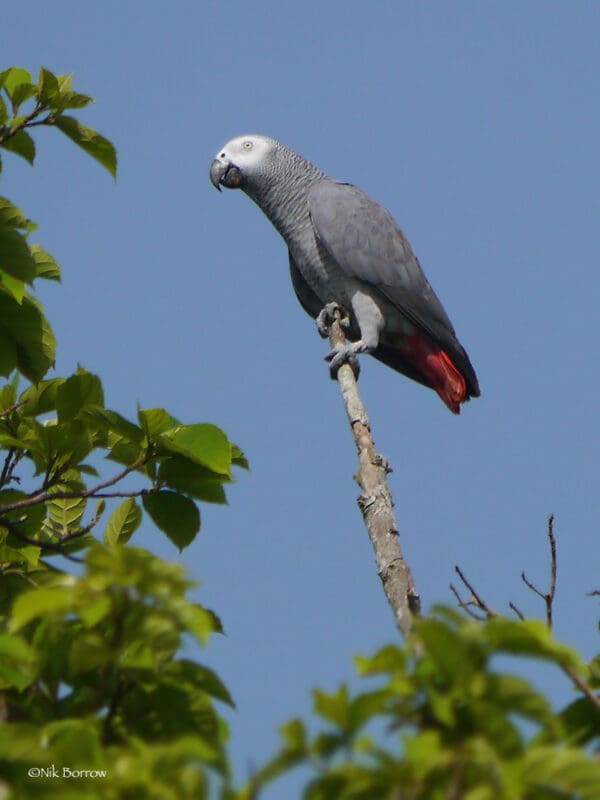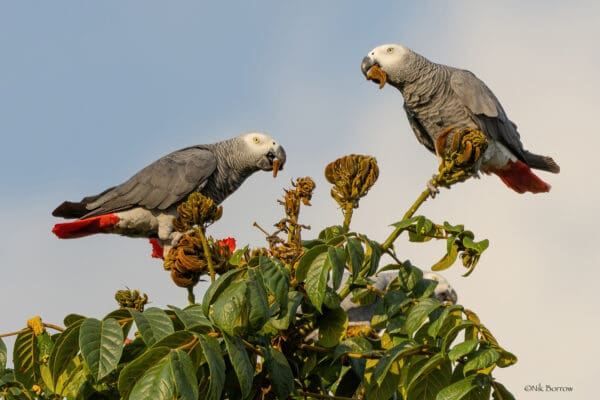Grey Parrot
Also known as:
African Grey Parrot, Congo African Grey Parrot
Also known as:
African Grey Parrot, Congo African Grey Parrot
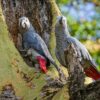
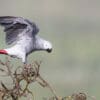
![© Papooga (Own work) [CC0] via Wikimedia Commons A companion Grey Parrot preens](https://parrots.org/wp-content/uploads/2023/01/wpt_Grey-Parrot_1107-49-100x100.jpg)
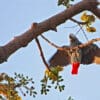
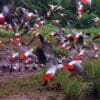
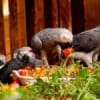

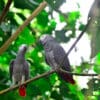
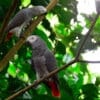
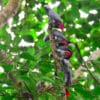

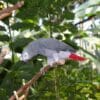
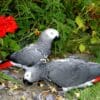

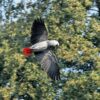
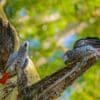
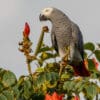
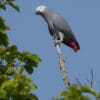
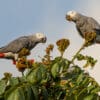
DID YOU KNOW?
Grey Parrots can be found up to 2200 m (7216 ft).

Psittacus

erithacus
Size:
33 cm (12.8 in)
Weight:
400 g (14 oz)
Subspecies including nominate:
one
Colour Adult:
Both adults grey in colour with grey/white scalloping to feathers; flight feathers darker grey; red tail and lower undertail coverts. Beak black. Eye grey.
Colour Juvenile:
As in adults but with grey tinged lower undertail coverts; tail tipped with red. Eye dark grey to black.
Call:
Variety of whistles, squawks, shrieks, and screams given at rest and in flight; mimics other birds, and mammals.
More Information:
Content Sources:
CITES
Avibase
BirdLife International
Cornell Lab of Ornithology/Birds of the World
A Guide to Parrots of the World, Juniper and Parr, 1998
Parrots: Status Survey and Conservation Plan 2000-2004, Snyder, McGowan, Gilardi and Grajal, 2000.
Parrots of the World, Forshaw and Cooper, 1989.
Parrots of the World, Forshaw, 2006.
Parrots in Aviculture, Low, 1992.
Psittacine Aviculture, Schubot, Clubb and Clubb, 1992.
Avian Pediatric Seminar Proceedings, various authors, 1988.
Captive Status:
Common
Longevity:
50-60 yrs
Housing:
Aviary or suspended cage, minimum length 3 m (9.8 ft).
Diet:
Cooked beans and pulses, boiled corn, sunflower seed – dry, soaked or sprouted but limited; fruit such as: apple, orange, banana, pomegranate, pear; rearing food (hard boiled egg, wholegrain bread and carrot); vegetables such as: carrot, celery, green beans and peas in the pod; spray millet; complete kibble.
Enrichment:
Provide overhead misters or shallow water bowls for bathing; foot toys, destructible (non-toxic) toys, non-destructible (non-toxic plastic) toys, food-finder toys, preening toys, different texture and size hanging perch toys; fir, pine, elder or willow branches, push-and-pull toys (sliding up and down), vegetable tanned leather toys. Introduce with care, as Greys are sensitive to novel things.
Nest Box Size:
Vertical box 12″ x 12″ x 24″ (30.5 cm x 30.5 cm x 61 cm).
Clutch Size:
2 to 3
Fledging Age:
11-12 weeks
Hatch Weight:
—
Peak Weight:
—
Weaning Weight:
—
World Population:
As few as 500,000 individuals, rapidly decreasing.
IUCN Red List Status:
Endangered
CITES Listing:
Appendix I
Threat Summary:
Formerly widespread over much of Africa, Grey Parrots are now threatened throughout much of their natural range: extensive deforestation particularly in W Africa and heavy trapping for the wild bird trade have caused population declines, which have been noted in Burundi, Cameroon, Ghana, Kenya, Nigeria, Rwanda, São Tomé and Príncipe, Togo, Uganda and parts of Congo and the Democratic Republic of the Congo.
Range:
Found in S Nigeria, S Central African Republic, Republic of Congo, DRC, Gabon, Equatorial Guinea, SE Ivory Coast, N Angola, S Democratic Republic of Congo, NW Tanzania, W Kenya, W Uganda, Principe and Bioko Islands.
Habitat:
Found in primary and secondary rainforest, forest edges and clearings, gallery forest and mangroves; wooded savanna, cultivated land and some gardens. Found up to 2200 m (7216 ft).
Wild Diet:
Diet includes a variety of fruits and seeds, particularly oil palm fruit, also consumes Cola tragacantha, Pseudospondias microcarpa, Ficus, Heisteria, Dacryodes, Petersianthus, Combretum, Macaranga, Raphia, Harungana, Ceiba, Blighia, Bombax, Celtis, Caccia, Petersianthus, Parkia, Terminalia and maize.
Ecology and Behaviour:
Feeds at tops of trees; gregarious, forming communal flocks which roost in palms over water or on islands in rivers. Disperses in smaller groups for feeding.
Clutch and Egg Size:
2 to 3 rounded ovate eggs, 39.5 x 31.0 mm (1.5 x 1.2 in).
Breeding Season:
In E Africa January-February and June-July; in general in other areas a dry season breeder. Nest is in cavity in tall living tree.
Related Links:
—
